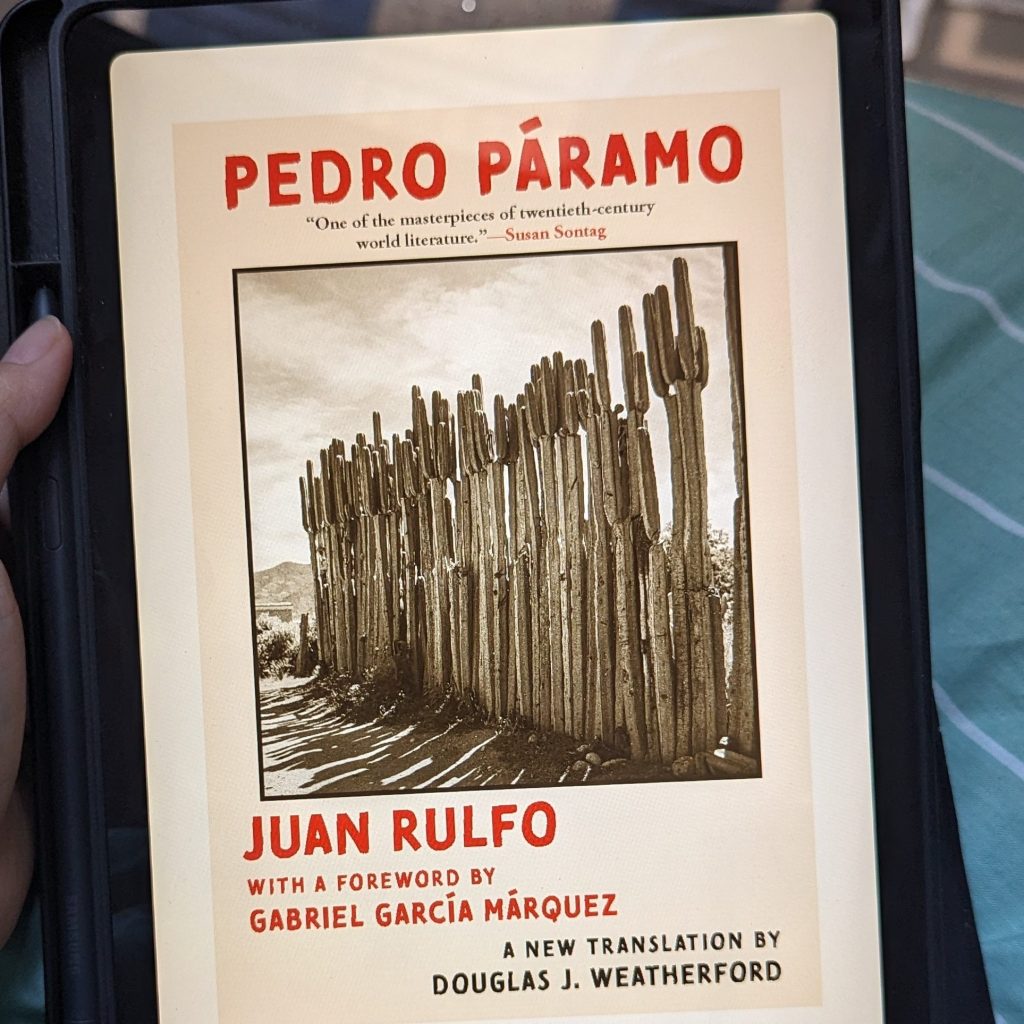Pedro Páramo is a thundering grandeur. Non-linear narrative; yes, please. Population of characters who are conscious of their alienation; served. Latin-American literature through its history knows what to do with estrangement. (The last novel I read was Macedonio Fernández’s The Museum of Eterna’s Novel and I still remember the imaginary fireworks surrounding myself as I went through each page.) Juan Rulfo was Márquez’s and Borges’s predecessor and readers don’t have to always buy the “magic realism” category. A reader may crisscross between highlighting words, annotating lines, making sense of the plot. But episodes of encounter, imagined intimacy, and violence when written in fragments troubles plot-dependent readers. Some phrases hit head harder than the others. Horses. Dying in a party. Gazes whispering. Oh Susana, how I love her.
(I made twit-prints out of the novel):
Yes, what exactly do I understand? The novel nods to the impossibility of overcoming vertiginous ripples between dreams/realities and memory/illusions. The slash virgule should not even be here. This is how Ruflo’s em-dashes and quotation marks (the “ ” and the French-style « ») make the absence of boundaries. The real and imagined are just a punctuation away. Who are the living and the dying? Who is the narrator and the subject of stories? Names, names, even more names. Fragmented conversations. Regular changes of daylight and sky night.
Let’s over jump, let’s get stretching too much: should readers overcome the constant elation every time they encounter jubilant characters? You know, those moments when fiction usurps everything you think you know, making you confront comfort again and again and again. Return to what you know, now make anew. What’s that again, a passage Alejandro Zambra lays: “Fiction only triumphs when it fails, when it lets us see the traces of reality”? The exultation of Pedro Páramo lies in this beating down the dual realms of life and death, that both are Hell which is unknown to Heaven yet latching to each other in the harmony of producing dreams. This is a trace: the dreamy and the imaginary are reality.
At the end of the encounter, things can be a little scratchy though. Weatherford’s suggestion to read the novel like a history-buff knows Mexican history does not compel. As a translator who knows what’s up with the difficulties of reading in translation, he renders a knowing reader who delves further into the heart of Ruflo’s historical reference as an (the?) ideal reader of Pedro Páramo. What about the not-so-ideal reader who stops in the urgency of Ruflo’s fragments? If understanding (or slight familiarity to) the political history of Mexico is essential in reading this fiction as a whole then the novel disallows ignorance. Whispers and murmurs of the dames and the damned in the novel have things to do with the will to be historical. “What exactly do you understand?” Is this question, that coming from incestuous siblings teasing the heaven-knows-who-is-the-narrator, an inquiry of history or a psychosis pledge of approximate promise that the virgule between dreams/realites will be eternally dim?
Let the question sit there. I want to temporarily conclude.
The incarnation of fragments: Ruflo’s novel denies summary. Once you try condensing, summing up, you may fail to flow on. Wikipedia page offers lists of characters and neat scenes of wedding and murder, rape and love. But the repetitive damnation of dead-dream, in which memories stay as residue for other memories to emerge, tells more about the revolutionary mind-shaking, departing away from the fixation of who-is-who. We don’t get to understand matters of politics through the mere history of the sane. The insane, the schizophrenic, may lead you through day and night. You don’t need to exactly understand. Again, in approximation, love and regret prevail. The fragments incarnate in bitterness and condemnation. And hope, my don, is nebulous.
